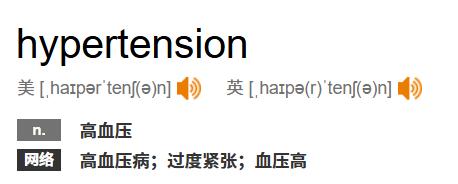In the field of translation, translations can be divided into multiple categories based on the differences in text types, and each category has its unique requirements and characteristics. Today, we'll introduce five common types of translation texts. Let's see if there are any text types that you're familiar with and have in - depth knowledge of.
1. Literary Translation
Literary translation mainly focuses on literary works such as novels and poems. Translating such texts is quite challenging because it requires not only accurately conveying the original meaning but also preserving the literary charm of the work. For example, the English version of Japanese writer Haruki Murakami's novel Norwegian Wood was translated by Jay Rubin. He skillfully retained the original metaphors and poetic flavor while adjusting some cultural images within the context familiar to Western readers. Literary works often use formal language, and authors employ unique writing styles and numerous rhetorical devices. Complex vocabulary, humorous expressions, and idioms in novels and dramas are difficult to translate literally. In the case of poetry translation, the challenge lies in finding rhyming words in the target language. A slight mistake may cause the translated text to lose the fluency of the original. Therefore, professional translators proficient in the literature of both languages are usually required. They take into account emotions and imagery to strive for a perfect presentation of the original work. Although with the development of natural language processing technology, machine translation has made some progress in this regard, it still cannot reach the natural and fluent level of human translation.
2. Legal Translation
Legal translation is widely used and involves various legal documents such as contracts, agreements, and policies. Since these documents are legally binding, the accuracy of language is of utmost importance. For example, the official translation of the General Data Protection Regulation (GDPR) of the European Union covers 24 language versions. The German version has been repeatedly cited by the Court of Justice of the European Union due to its precise legal terms and compliance with the framework of the German Federal Data Protection Act (Source: EUR - Lex database, 2018). If errors occur due to literal translation, serious legal consequences may follow. This requires translators to not only have a good command of two languages but also have an in - depth understanding of the political and legal background of the target language country. When necessary, they need to adjust vocabulary according to the subtle differences in culture, politics, or law, and strictly adhere to the document format. Therefore, lawyers usually seek professional legal translation services.

3. Financial Translation
In the financial field, language often serves as a barrier to market access, highlighting the importance of financial translation. Financial institutions such as banks and insurance companies use financial translation to localize key financial documents, such as income reports and tax filing documents. When the annual report of JPMorgan Chase, an internationally renowned financial institution, is released globally, it requires a professional translation team to translate it into multiple languages. During the translation process, professional financial terms like "Risk - Weighted Assets" and "Hedging" must be accurately translated to comply with international financial industry standards. In addition to ensuring the accuracy and comprehensibility of the content, it may also be necessary to adjust the format according to the writing habits of the target language. For example, for languages written from right to left, the column order of tables may need to be reversed; in some languages, a comma is used as a decimal point. Both human translators and translation software can handle financial translation. Software has an advantage in speed and efficiency due to its automation. Given the strict regulations in the financial industry, accurate translation of documents is the key to avoiding penalties and legal disputes.

4. Technical Translation
Technical translation plays an important role in many industries such as construction, engineering, and aviation. It is mainly responsible for translating materials such as user guides, engineering drawings, and patent documents. This type of translation has strict requirements for format. In addition to language proficiency, translators need to have relevant industry expertise and be familiar with engineering processes and practical operations. For example, the maintenance manual of the Airbus A380 needs to be translated into French, German, and other languages. The hydraulic system term "bleed air" is translated as "Zapfluft" in the German version, which must be completely consistent with the standard terms of the European Union Aviation Safety Agency (EASA).
5. Medical Translation
Medical translation is used in medical education and medical practice. It needs to be strictly in line with the medical terminology, physiology, and pharmacology systems of the target country, covering professional texts such as clinical trial reports and patient medical records. Since these documents are directly related to life and health, there is no room for error. Translators usually work closely with medical professionals. For example, when translating "hypertension", in Chinese, it is necessary to accurately distinguish between different expressions such as "高血壓(hypertensive disease)" and "血壓升高(elevated blood pressure)". Such subtle differences require careful review of terms to ensure consistency with the Chinese Guidelines for the Prevention and Treatment of Hypertension. In addition, cultural sensitivity and ethical considerations are inseparable. Therefore, medical translation requires not only language accuracy but also medical professionalism, legal compliance, and cultural adaptability, all of which are indispensable.

Different types of text translations play an indispensable role in various fields. Choosing the right type of translation is crucial for ensuring the accurate transmission of information, meeting the needs of specific fields, complying with regulations, and effectively reaching the target audience. In actual translation work, the appropriate translation method and translator should be carefully selected according to the specific nature of the text and the translation purpose to achieve high - quality translation results.
About Glodom:
Glodom is an innovative language technology solution provider. It focuses on fields such as ICT, intellectual property, life sciences, gaming, and financial economics, covering three business modules: language services, big data services, and AI technology applications. With more than 300 full - time employees and over 10,000 native - speaking translation experts in more than 40 countries around the world, it can support more than 200 languages. The headquarters of Glodom is located in Shenzhen, and it has branches in Beijing, Shanghai, Hefei, Chengdu, Xi'an, Hong Kong, Cambridge, UK, and other places. Glodom has provided one - stop multilingual solutions for many Fortune 500 companies and well - known domestic enterprises, and established long - term and stable cooperative relationships.
Original Link: https://www.transifex.com/blog/2024/different-types-of-translation/
Article Source:.transifex
Copyright Notice: Some of the content of this article comes from.transifex. This website does not own the copyright and does not assume relevant legal responsibilities. The information in the article only represents the author's views, not the official position of Glodom. The content is for reference and learning by netizens. If there is any infringement, please contact info@glodomtec.com to delete it!


